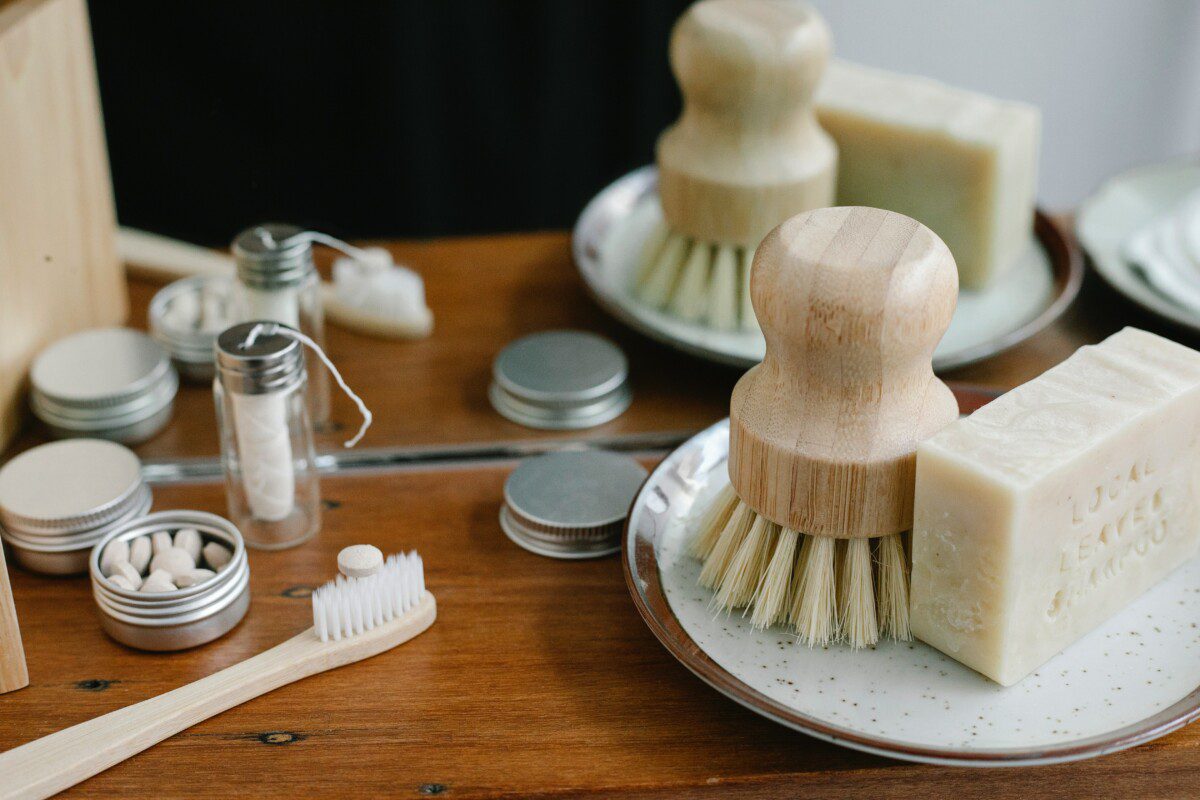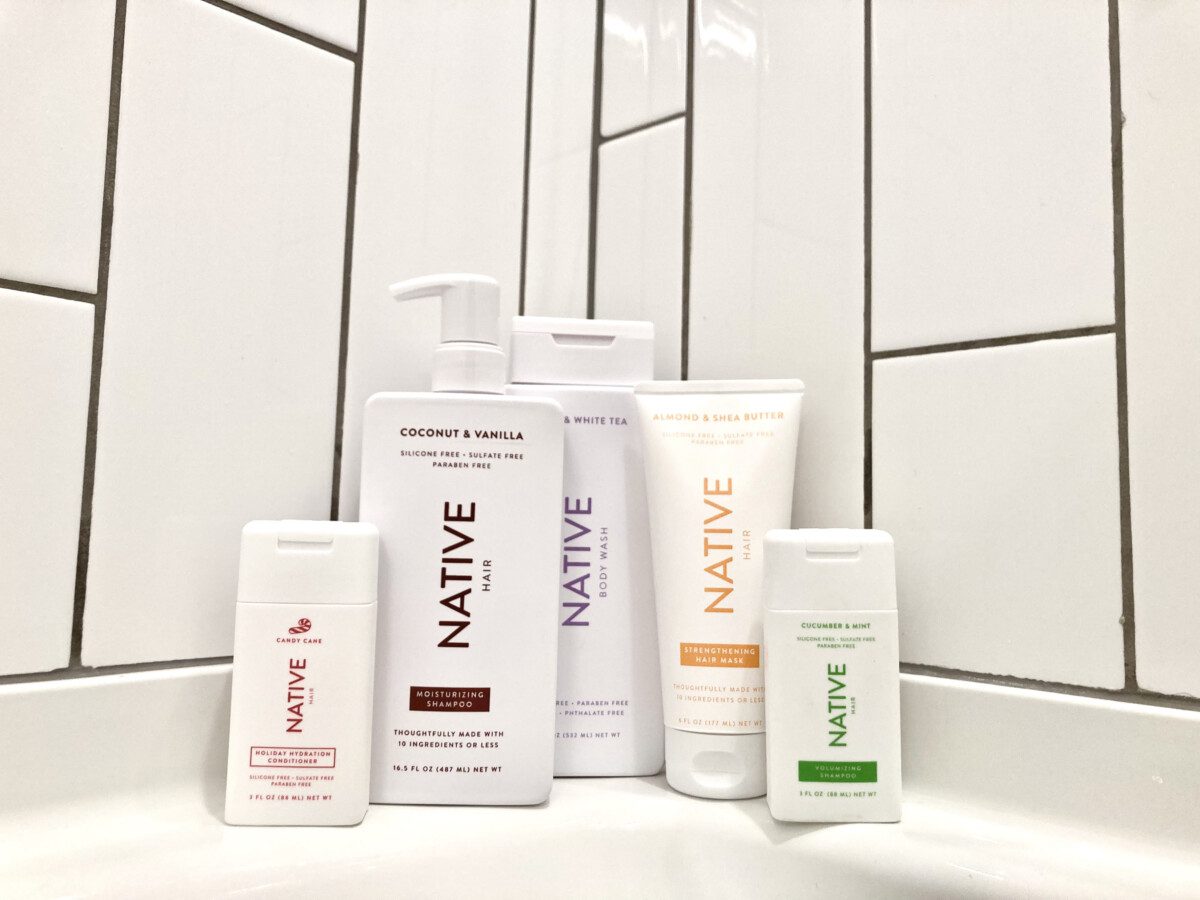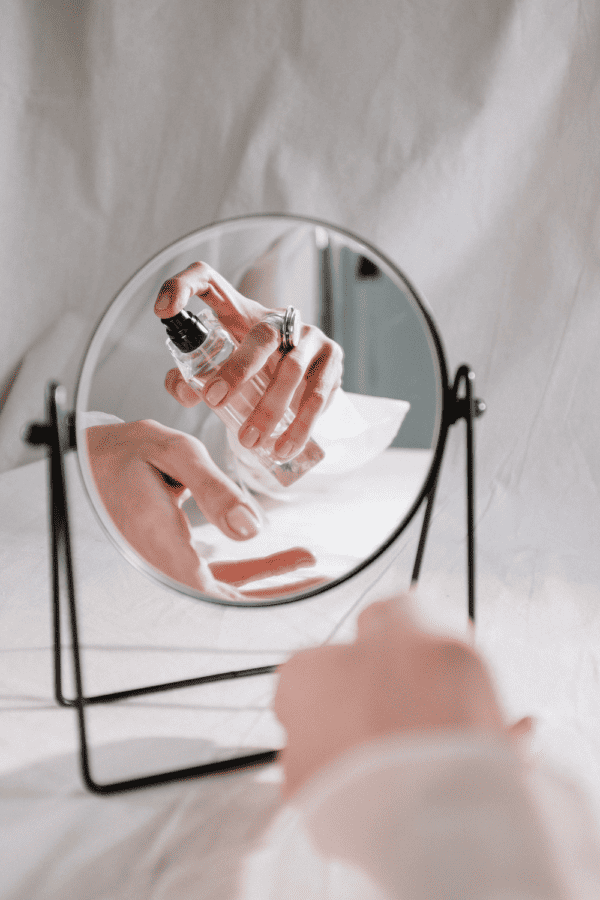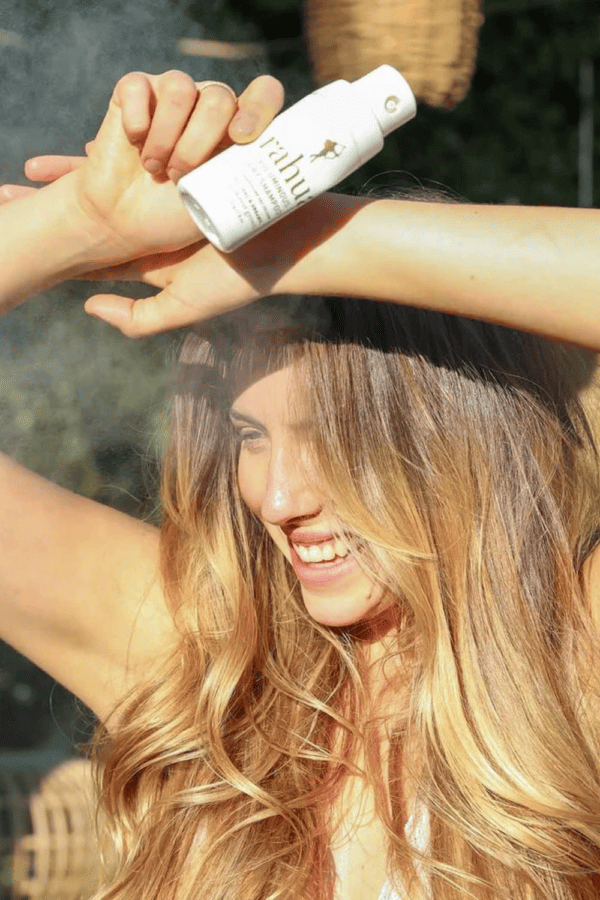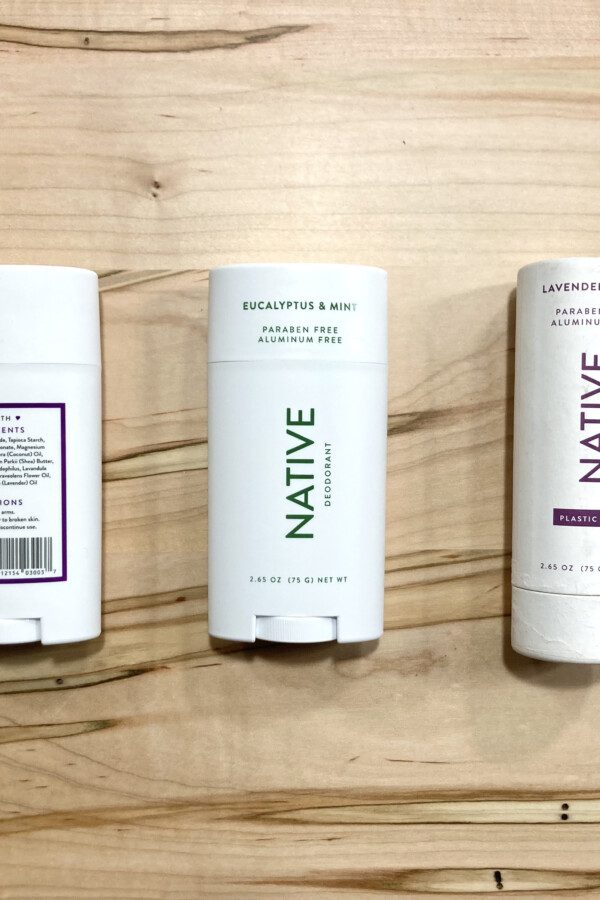Important note! As of early 2024, it appears that Native no longer manufactures or sells toothpaste. Instead, check out one of these natural toothpaste brands.
I’ve covered Native’s well-known deodorant as well as their shampoo and conditioner, and now it’s time to dive deep into their toothpaste!
I purchased several varieties of Native toothpaste and used each one of them to provide this accurate (and unsponsored) review. So in this article, I’m looking into Native toothpaste ingredients, the pros & cons, whether or not it’s suitable for kids, general thoughts on effectiveness, and more.
Let’s do it.
Native Toothpaste Review: Table of Contents
- About Native
- Native’s Toothpaste Options
- Native Toothpaste Ingredients
- My Review of Native Toothpaste’s Effectiveness
- Foaminess
- Note on Charcoal
- Does Native Toothpaste Whiten Teeth?
- Is Native Toothpaste Good for Sensitive Teeth?
- How Good Are The Toothpaste Tablets?
- Is Native Toothpaste Vegan?
- Is Native Toothpaste Gluten-Free?
- What About Price?
- Is Native Toothpaste Good for Kids?
- TL;DR: Summary of My Honest Review On Whether I Think Native Is Good
- Toothpaste Brands that are Healthier Than Native
- More FAQs About Native Toothpaste
This article was not sponsored and I purchased this toothpaste to review; it was not gifted. This article does, however, contain a few affiliate links, which means we may earn a commission if you decide to make a purchase. All thoughts are honest and recommendations are genuine, as always.
About Native
You probably know about Native because of their deodorant—their most well-known product. (You can read my full deodorant review here.)
The brand was originally founded in 2015 by Moiz Ali, a Harvard grad. What started out as a direct-to-consumer indie deodorant brand was acquired by Proctor & Gamble (P&G) in 2020. They’ve since expanded to include other staples like haircare, skincare, suncare, and more.
Native’s Toothpaste Options
Native carries several different kinds of toothpaste, including:
- Whitening Wild Mint (both with and without fluoride)
- Detoxifying Charcoal (both with and without fluoride)
- Sensitive Soothing Mint (with fluoride only)
- Wild Mint Tablets (fluoride-free only)
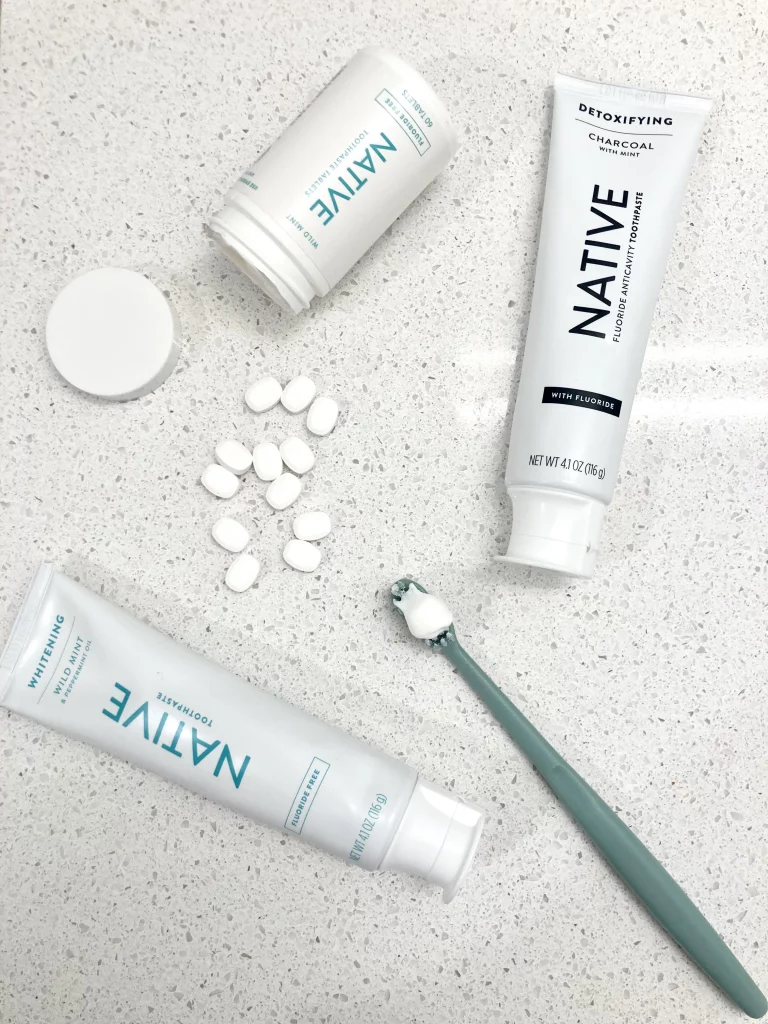
Native Toothpaste Ingredients
Before sharing my thoughts on the various varieties of toothpaste I tried, let’s briefly take a closer look at the ingredients.
For the most part, Native’s toothpaste ingredients are relatively *clean.* Here are some good things that are missing from their ingredient list and worth pointing out:
- It’s free from unnecessary synthetic and petroleum-based dyes that are very common in other toothpaste brands.
- It’s free from sodium lauryl sulfate (SLS), which is commonly used to make personal care products foamy. (Read more about SLS in our deep dive)
- It’s free from ethoxylated ingredients, which are also very common in other popular toothpaste brands. (Ethoxylated ingredients are very common in cleaning and personal care products and are basically impossible to avoid completely. While they’re not of incredibly high concern, they can be contaminated with two known carcinogens due to the manufacturing process, so I do like to see products without them when possible.)
- It’s also free from triclosan. A pesticide and known toxin, triclosan used to be widely used in personal care and cleaning products (especially those advertised as ‘antibacterial’). And while it’s still an important ingredient for consumers to watch out for, it’s been pulled out of almost all personal care products in the U.S. over the past several years. Even the big brands like Colgate and Crest don’t use it anymore.
Here are some things I’m not thrilled about seeing on Native’s toothpaste ingredient list:
- It contains “Flavor,” indicating a lack of transparency. (Much like the “fragrance” issue we see all over the place in personal care products, companies are allowed to list “Flavor” on their ingredient lists without actually saying what that “flavor” is made out of or how it’s sourced. That doesn’t necessarily mean it’s bad for you, but the point is that you just don’t know. When I reached out to Native to ask for more information about their “fragrance” ingredients in their deodorant and haircare products, they (not surprisingly) neglected to give us that information, saying that it’s “proprietary information.” At the end of the day, I believe consumers deserve to know what’s in the products they buy and use.
- The toothpaste tabs also contain acacia senegal gum. While this is not an ingredient of super high concern, it is a known allergen.
It’s also worth noting that Native’s toothpastes contain other ingredients like xanthan gum, carrageenan, and Stevia. These ingredients aren’t problematic for most people, but some may have sensitivities or (in the case of Stevia) just have a general dislike for it. So if you fall into that camp, it’s just something to be aware of!
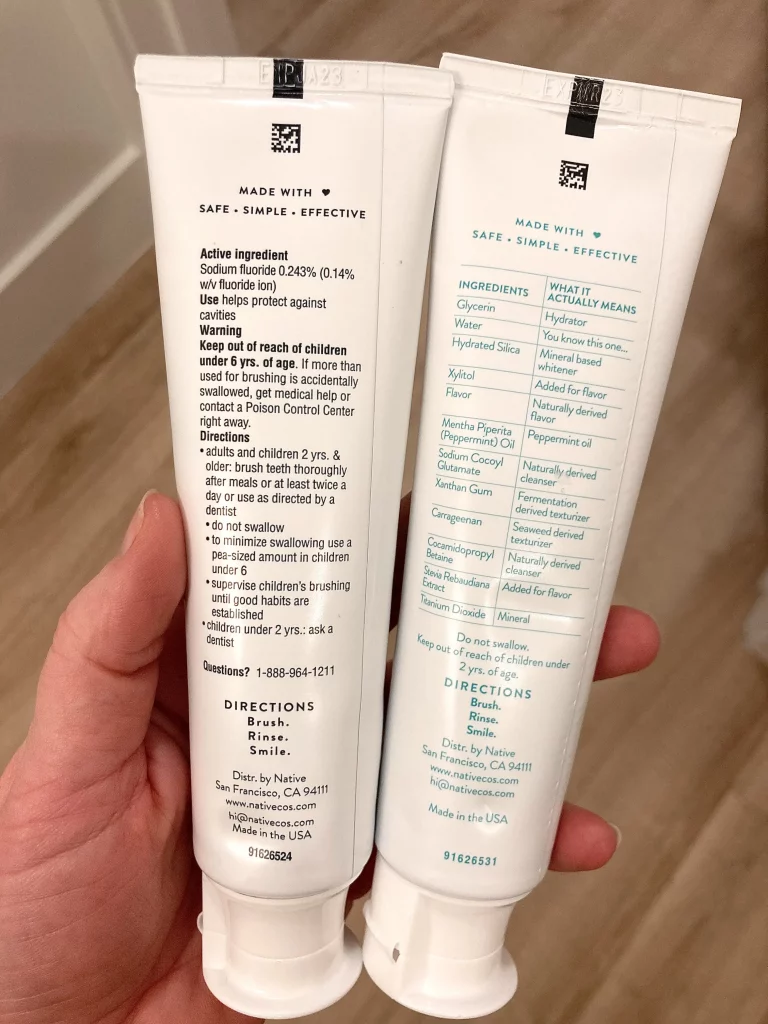
Fluoride or No Fluoride? Many Dentists No Longer Recommend Fluoride
Of course, one of the main ingredient-related questions when it comes to toothpaste has to do with fluoride. I’m not going to dive into this controversial issue right now, but if you want to get a really good summary, I highly recommend listening to this podcast episode with dentist Dr. Mark Burhenne. (Here are the links for Spotify, YouTube, and Apple.)
To make a long story short, dentists originally saw a correlation between fluoride treatment and cavities in the early 1900s, but the argument for fluoride just isn’t holding up to modern-day data. As Dr. Burhenne explains, fluoridation essentially equates to saving a person one cavity over the course of their entire lifetime. So technically, yes, fluoride can help to prevent cavities. However…
The potential downsides of too much fluoride are extremely concerning. Fluoride is now linked to things like a lower IQ (by anywhere from 5 to 9 points), ADHD, fertility problems, bone weakness, cancer, Alzheimer’s, and various other negative health effects. Of course, it can also cause fluorosis, which are those white spots on your teeth!
Now, it’s important to note that drinking fluoride in our water is different from using it topically in toothpaste. But even adults usually end up swallowing little bits of toothpaste and I generally just don’t want any more of it in my “diet,” especially when I can’t get rid of it completely. Even though I filter my water at home, I still get fluoride from drinking at restaurants, from foods and other types of beverages, and from PFAS-exposure. Toothpaste is one thing I can control, which is why I’ve switched to fluoride-free options for the most part.
All that being said, though, I do like the fact that Native offers both fluoride and fluoride-free options so that you can make the choice for yourself. (I did buy and try both kinds for the sake of this article. I didn’t notice a difference between them from a short-term standpoint.)
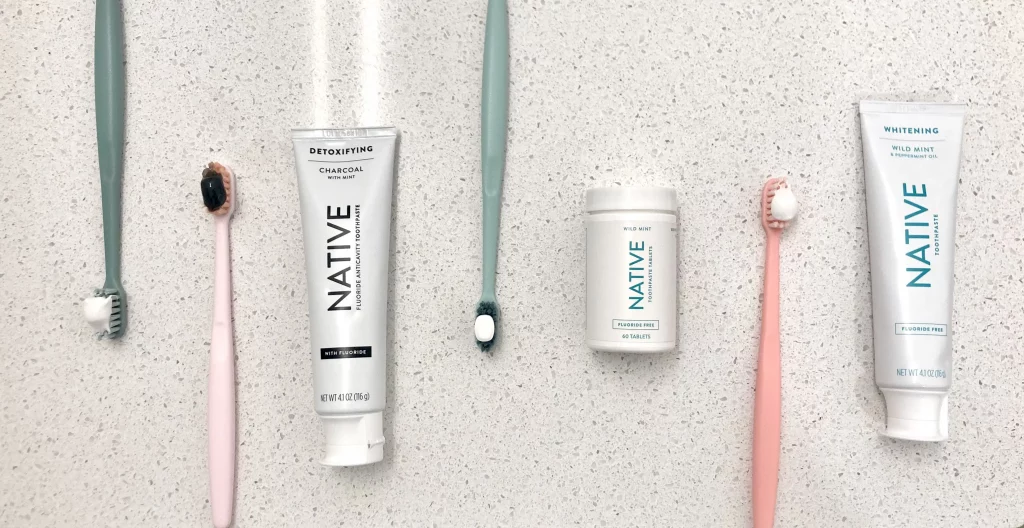
My Review of Native Toothpaste’s Effectiveness
Okay, now let’s get to Native’s actual performance. I used several different kinds of Native toothpastes including:
- The Detoxifying Charcoal (with fluoride)
- Whitening Wild Mint (without fluoride)
- And the Wild Mint Tablets (also without fluoride).
In general, they were fine! They were nothing special, but they definitely did the job just as well as the well-known toothpaste brands.
Foaminess
All of the toothpaste varieties I tried do foam (the paste ones a little bit more than the tablets). This is not always the case with more “natural” toothpaste brands. It’s my understanding from listening to dentists that toothpaste doesn’t need to foam in order to do its job (think about the toothpaste a dentist uses to clean your teeth—no foam). But some people do prefer toothpaste that foams because they make them feel like their teeth are cleaner.
Note on Charcoal
One thing I was surprised by was that the detoxifying charcoal toothpaste (which is black) turned into a foamy white color upon brushing with it. This is different from the other charcoal toothpastes I’ve used in the past, which stay black as you brush. I personally don’t care either way, but some people might not like looking in the mirror to see their teeth all black while cleaning them!
Related:
Body
The Best Natural & Non-Toxic Dental Floss (Without PFAS)
Conventional dental floss contains toxins like PFAS and phthalates. Here’s what to look for in safer floss for your family and our favorite natural, non-toxic, and plastic-free dental floss brands without PFAS.
Does Native Toothpaste Whiten Teeth?
Even though “Whitening” is in the name of Native’s toothpaste varieties, I personally did not notice a difference in the whiteness of my teeth after using it for several months. But, I also didn’t notice a decrease in whiteness either.
More ‘conventional’ toothpaste brands use ingredients like hydrogen peroxide (a bleaching agent which can become problematic at higher levels) as whitening agents, whereas Native uses hydrated silica, as a safer option. Other whitening ingredients include things like calcium carbonate, which acts as a “scrubber” to get food particles and stains off of your teeth.
Is Native Toothpaste Good for Sensitive Teeth?
Native used to have a Sensitive version of their toothpaste, but it looks like it is no longer manufactured. (That said, the only difference I could find between the regular Wild Mint ingredient list and that of the Sensitive version is that the regular version contains xylitol (“added for taste”) and the sensitive version doesn’t. So, it seemed like either the “Sensitive” version is just a marketing thing, or maybe they changed the concentrations of the different ingredients without really altering the ingredient list as a whole.)
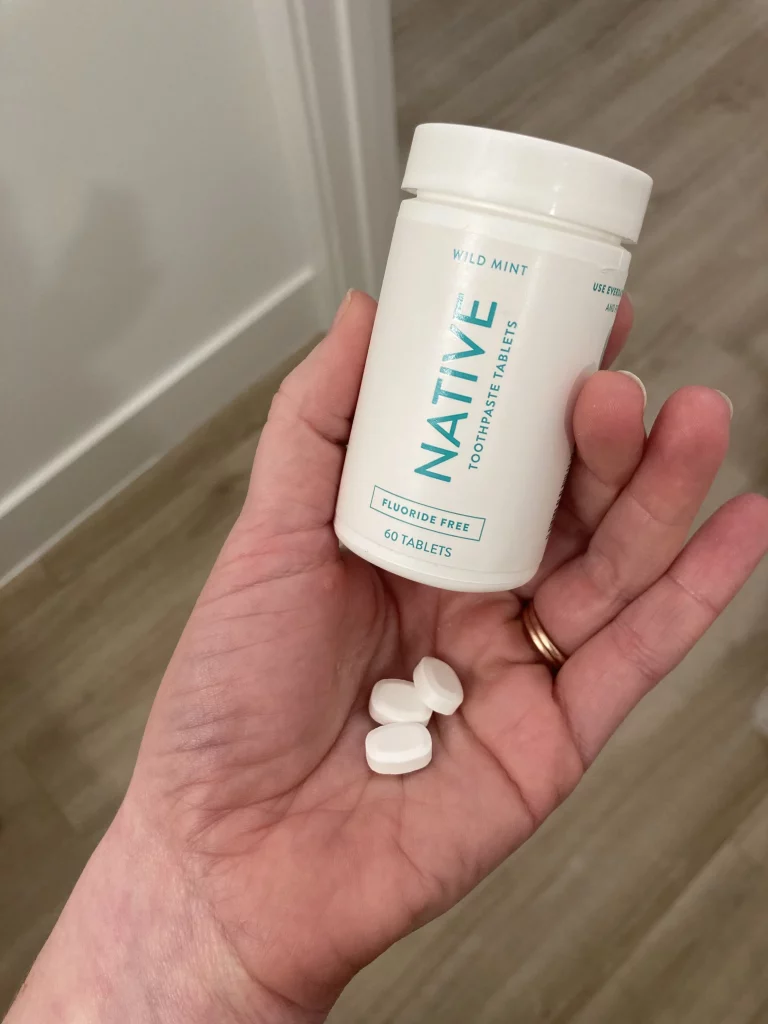
How Good Are The Toothpaste Tablets?
Toothpaste tablets have become a popular choice among zero wasters and in addition to their standard paste-in-tubes, Native used to offer toothpaste tablets, but it looks like they are no longer available.
When it comes to toothpaste tablets in general, I think it ultimately just comes down to preference. If you haven’t used them before, it might take some getting used to. You basically just put the little chalky tablet in your mouth, chew it up, and then brush your teeth as usual. When the chewed-up-tablet comes into contact with your saliva and the water from your toothbrush, it turns into a foamy paste and from there feels like normal toothpaste.
Personally, I don’t love or hate the tablets. They kinda remind me of Tums, which gross me out, so that’s not ideal. But again, it’s whatever you prefer. Some people I know really love them.
The thing about Native’s toothpaste tablets, though, is that they’re actually NOT zero waste—they come in a plastic container! So from the zero waste perspective, I don’t really see what the point is at all. For a more zero waste option, you’d be better off going with a brand like Huppy.
Is Native Toothpaste Vegan?
Native says their toothpaste is made with all vegan ingredients but is not certified vegan.
As their website states: “None of the ingredients used in our toothpaste are sourced from animals or animal byproducts, but the finished product has not been certified vegan. Our toothpaste is also made without animal testing – only humans who willingly volunteer.”
Is Native Toothpaste Gluten-Free?
Yes. Similar to the vegan question, Native says their toothpaste is not made with any gluten-containing ingredients, but it is not certified gluten-free.
From their website: “While Native toothpaste is made without any intentionally added gluten or Soy, they are not certified gluten-free. However, our cleaning and sanitizing process between each product produced ensures no cross-contamination of gluten or soy.”
What About Price?
Native toothpaste costs $10, which is higher than the typical price tag on conventional brands like Crest or Colgate, but comparable to other natural and non-toxic toothpaste options.
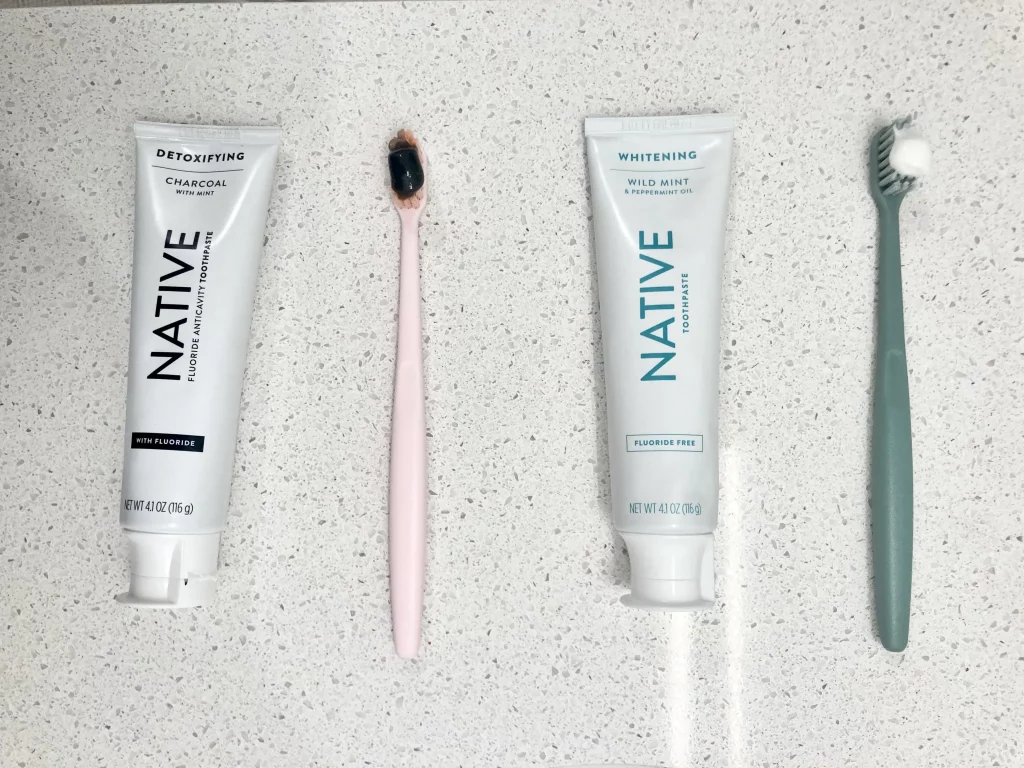
Is Native Toothpaste Good for Kids?
The short answer is: no, Native toothpaste is not good for kids.
Here are a few reasons why:
One, most kids don’t like mint flavor and Native has zero non-mint options.
Two, the fluoride issue is of the highest concern for children (as well as fetuses and babies):
- One reason is that their bodies are just smaller and therefore are more likely to be affected by lower amounts of pretty much any chemical.
- The second reason is that they are still developing and are therefore more vulnerable to long-term consequences of even small changes to their hormonal function (which fluoride can disrupt).
- The third reason is that children are SO much more likely to swallow toothpaste while brushing their teeth. (And as mentioned earlier, fluoride is much more of a problem when it’s ingested versus used topically, which is a big reason why toothpaste should not be swallowed.)
Again, I recommend checking out Dr. Mark Burhenne’s work, especially if you’re a parent. In the podcast episode recommended above, Dr. Burhenne talks about how, 30 years ago, before we had any of the data currently available, he made the decision not to let his kids have fluoride. Back then, he explains, it was a “better safe than sorry” approach. He said he’d rather NOT give his kids fluoride and end up having to fill a couple of their cavities later on than find out later that fluoride does in fact cause things like lower IQ, Alzheimer’s, and/or other serious health issues that can’t be fixed or undone.
I personally think that’s a pretty good approach, even if you’re still skeptical or on the fence about fluoride in general!
Lastly, Native itself says its toothpaste is not suitable for children. From their website: “We do not recommend that the product be used by children between 2 and 12. This is primarily due to the concern for the potential unintended overuse of toothpaste by small children.”
I read that as ‘our toothpaste is not safe enough to swallow.’
Related:
Body
Native Shampoo & Conditioner: Does it Work? Is it Non-Toxic?
In this article, we’re investigating Native shampoo and conditioner ingredients (are they safe and non-toxic?), what hair types are best suited for Native’s hair care products, and our honest thoughts after using Native’s hair care products.
TL;DR: Summary of My Honest Review On Whether I Think Native Is Good
On the whole, Native’s ingredient lists aren’t super concerning to me, especially as an adult. When it comes to kids and pregnant people, though, I personally would choose to stay away from fluoride.
When it comes to performance, it definitely works, but isn’t anything amazing or groundbreaking either. I would honestly rather spend the same amount of money on a product I’m a little more excited about.
Why I Won’t Be Purchasing Native Toothpaste Again
One of the main reasons I won’t be purchasing Native toothpaste again (after I run out of what I purchased for this article!) is the fact that Native is owned by P&G.
- They’re a huge corporation that uses a lot of questionable ingredients in their other products.
- They don’t seem to care about ingredient transparency.
- They have been caught doing quite a bit of greenwashing.
- They have recalled more than a few products in the past for contamination concerns.
On a sidenote, P&G also apparently changed the formulation of the toothpaste following the acquisition, which makes me wonder what sort of quality may have been lost with regard to sourcing.
I would rather buy from smaller brands that care just as much about building transparency and trust with their customers as they do about their bottom line (see below for recommendations).
All that being said, though, if I’m ever in a pinch and need to grab some toothpaste at Target, I’d feel okay about using Native every once in a while. Although there are brands I think are better, Native is definitely a better option than your more ‘conventional’ brand like Colgate or Crest.
So, to sum it up in some nice bullet points, here are my main pros & cons about Native toothpaste:
PROS:
- Several variations to choose from
- Available at Target
- Free from synthetic dyes, SLS, and ethoxylated ingredients
- Vegan & gluten-free
CONS:
- Contains unspecified “flavor”
- No options for kids
- Tablets are not actually low waste
- Owned by P&G
- Kind of expensive for what it is
Toothpaste Brands that are Healthier Than Native
There are plenty of great natural and non-toxic brands available! See our full guide here.
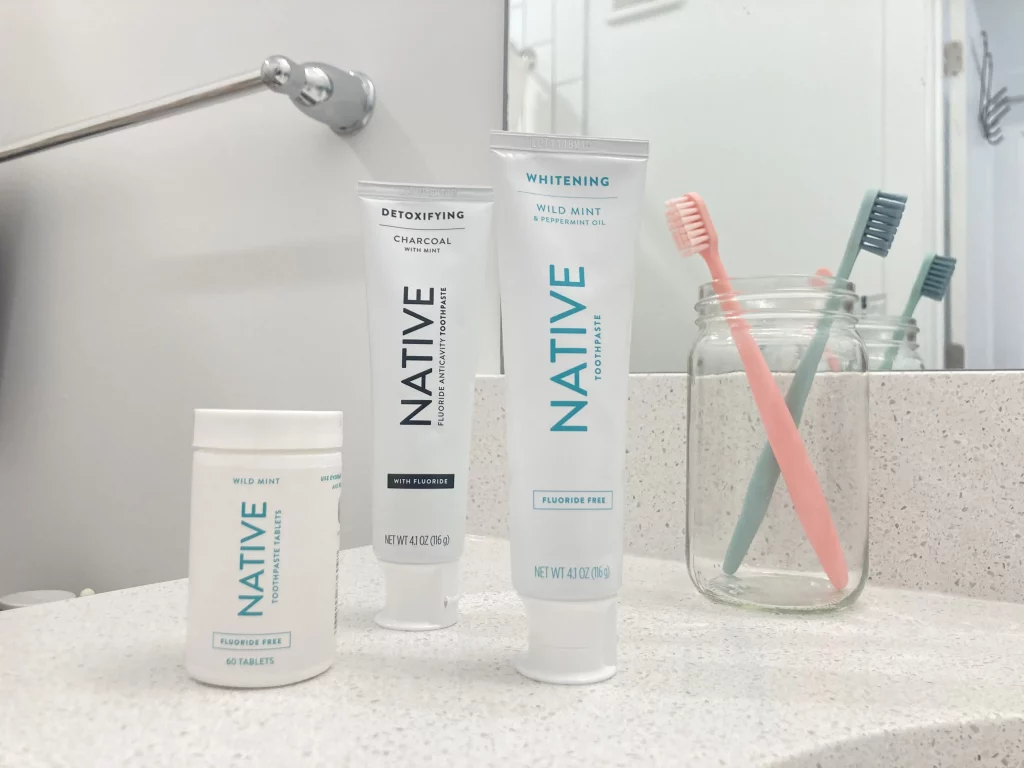
More FAQs About Native Toothpaste
Is Native Toothpaste All-Natural?
This is a difficult question to answer because it’s hard to know how exactly an ingredient is sourced. Naturally occurring ingredients can be made synthetically (which isn’t necessarily a good or bad thing in and of itself). And on the other hand, “natural” ingredients can be sourced in a way that’s not necessarily sustainable.
Native states that they use “naturally-derived cleansers” and “naturally-derived flavors.” Although I can’t say for certain that it’s 100% all-natural, it does appear that at least most of their ingredients are natural.
Where is Native Toothpaste Made?
Native toothpaste is made in the USA.
Who Owns Native Toothpaste?
Proctor & Gamble currently owns Native. Native was founded by an independent entrepreneur in 2015 but was then bought by P&G in 2020.
Is Native Toothpaste ADA-Approved?
No, As of this update in January 2024, it does not appear that Native’s toothpaste is ADA-approved.

